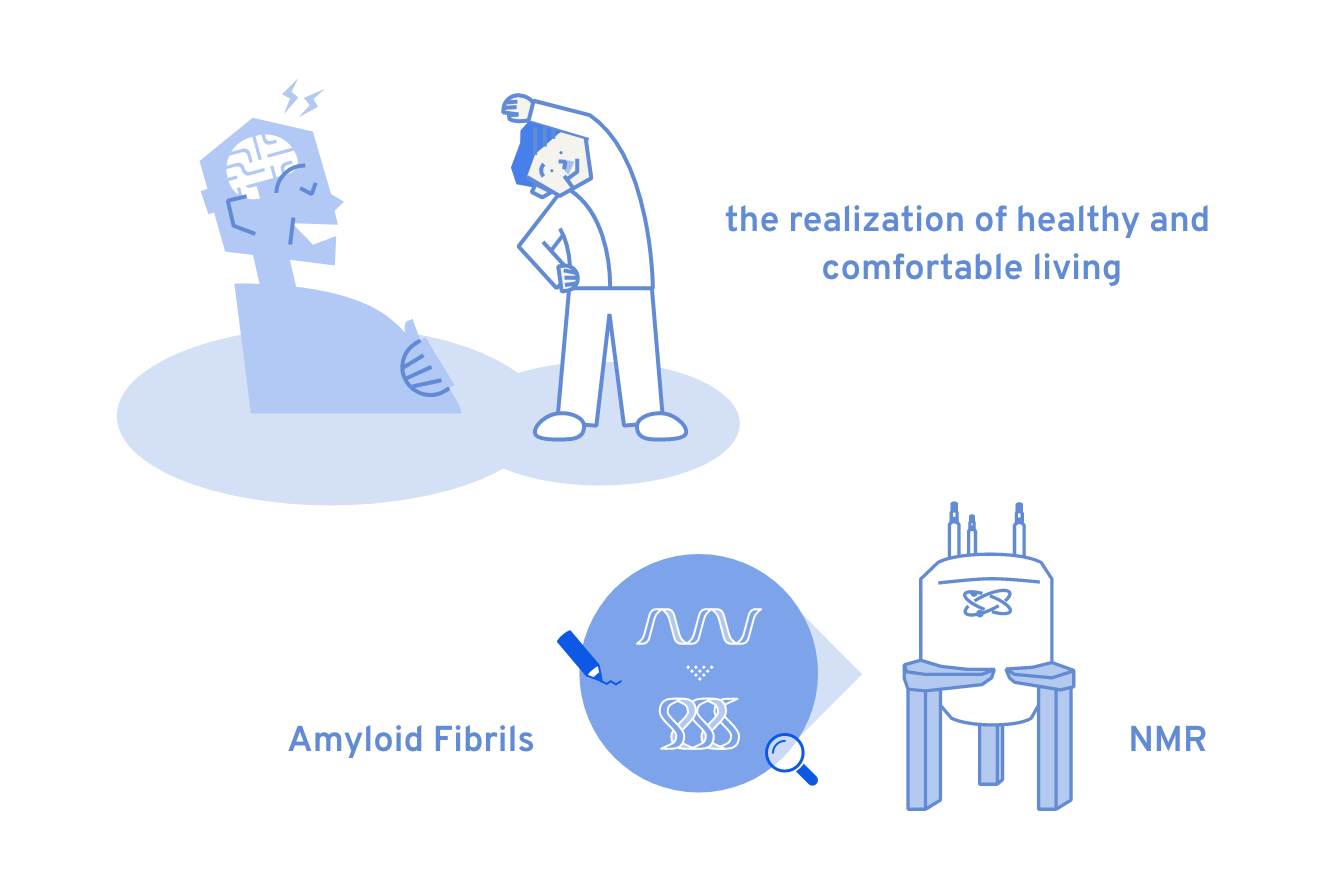Research
- Seeking hints for a healthy and long-lived society in the dynamic activities of nature.
- We study the functions and properties of proteins using NMR (Nuclear Magnetic Resonance), an analytical instrument that uses the resonance phenomenon of atomic nuclei. NMR can be used to determine the three-dimensional structure of proteins at the atomic level and to analyze dynamics on a wide range of timescales, from picoseconds (trillionths of a second) to seconds and hours. By taking advantage of the powerful capabilities of NMR, we are studying, for example, the mechanism of amyloid fibrillation of proteins involved in neurodegenerative diseases.

Publications
- Research results to date are presented.
- Keywords: Structural Biology / Biophysics / Computational Science / Neurodegenerative Diseases / Thrombosis / Protein / DNA / ATP / Food Derived Components / 3D Structure / Dynamics / Amyloid Fibrils / Nonequilibrium Environment / Shear Flow / NMR / Rheo-NMR
Member
- About us
- In the Biomacromolecular Chemistry Laboratory, we respect the independence and motivation of our members and operate our laboratory with the motto of "giving them opportunities to have various experiences". Our staff and students with diverse backgrounds engage in research activities while engaging in friendly competition every day.

Admission Information
- For those considering the entrance examination
- In the Division of Applied Life Sciences, research is conducted to understand how life is created and maintained at the atomic, molecular, and cellular level from the viewpoint of chemistry, and to use the results of such research as biotechnology to contribute to the realization of healthy and comfortable living.
For details on the graduate school entrance examination, please click the "Graduate School Admission Information" link below.
